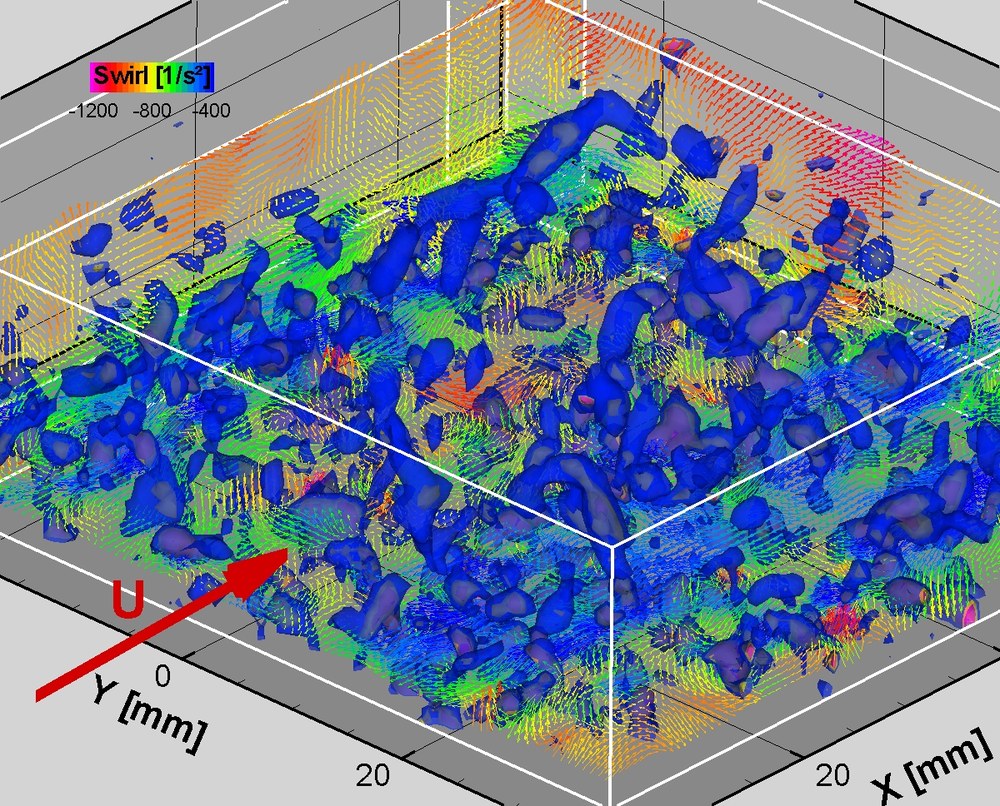Application of Particle Image Velocimetry: Boundary layers



The state and properties of boundary layer (BL) flows are very important issues for the design and operation of high performance air- and ground- vehicles as well as for many industrial flow technologies. The significant role of BL flows in aerodynamics has been highlighted and demonstrated experimentally and theoretically first by L. Prandtl in 1904 in Göttingen. Flow separation in regions of laminar flow, the detection of position and form of transitional flow structures and drag production in turbulent BLs are the related main problems under investigation in aerodynamic research. The investigation of unsteady and complex 3D flows like in transitional or turbulent BLs require instantaneous and quantitative field measurement techniques like PIV in order to capture whole flow topologies and their development for a closer analysis and further understanding of all features. In a multi-plane stereo PIV experiment the flow structures within a by-pass transition phenomena, so called turbulent spots, which are often appearing in natural transition on wings or in turbomachinery, have been investigated extensively. In Figure 1 an instantaneous velocity vector map of the flow structures inside a turbulent spot measured in a wall parallel plane are shown with a vector colour coding of the wall normal velocity component. The free stream is pointing from left to right and the local average velocity has been subtracted in order to visualize the fluctuation velocities.

The momentum exchange mechanisms in a turbulent BL flow are of manifold temporal and spatial scales and governed by the organization of self-sustaining coherent flow structures driven by entrained high momentum fluid. Generic flow structures such as hairpin-like vortices and spanwise alternating wall bounded low- and high-speed streaks have been observed and extensively analyzed with both experimental and numerical methods, e.g. by means of PIV or DNS. In many studies the role of these structures for the wall normal and spanwise fluid exchange has been highlighted mostly within an Eulerian reference frame. But for a full understanding of the momentum exchange in turbulent wall flows a step towards a spatially resolved Lagrangian frame of reference would be advantageous. In order to achieve these ambitious goals a cooperation of TU Delft, LaVision and DLR planned and performed a Time Resolved Tomographic PIV experiment in a water tunnel at TU Delft. The data achieved from the present application of time-resolved tomographic PIV to a flat plate turbulent BL flow at Re ~ 2460 enables for the first time a topological investigation of the flow structures and related particle motions within a temporally and spatially highly resolved Lagrangian and Eulerian reference frame. In Figure 2 and in the animation an instantaneous 3D-3C velocity vector volume out of a 1 kHz time series is shown with selected velocity vector planes and 3D-iso-surfaces of swirl strength indicating the presence of vortices. In Figure 3 a zoom into a region with several particle trajectories is given representing the motion and acceleration of single fluid elements in a Lagrangian reference frame.
Further research in laminar separation, transitional and turbulent BL flows using PIV and other modern optical measurement techniques is of high importance for the development of new turbulence models within and the validation of CFD (and integrating FEM and CAA) codes. This code development is a precondition for revolutionary aircraft designs enabling the needed dramatic reduction in emissions and meeting the goals of vision 2020 as well as for reliable performance predictions at the borders of the flight envelope of actual aircrafts.
